ARTICLE AD BOX
What Is Keyword Clustering?
Keyword clustering is an SEO method centered connected grouping hunt position that banal nan aforesaid hunt intent (what nan personification is trying to achieve) and targeting them together connected a azygous page.
For example, group searching “king size mattress,” “king mattress,” and a less different variations are each looking to bargain nan aforesaid product. And Google displays akin pages successful nan results for each of these queries.
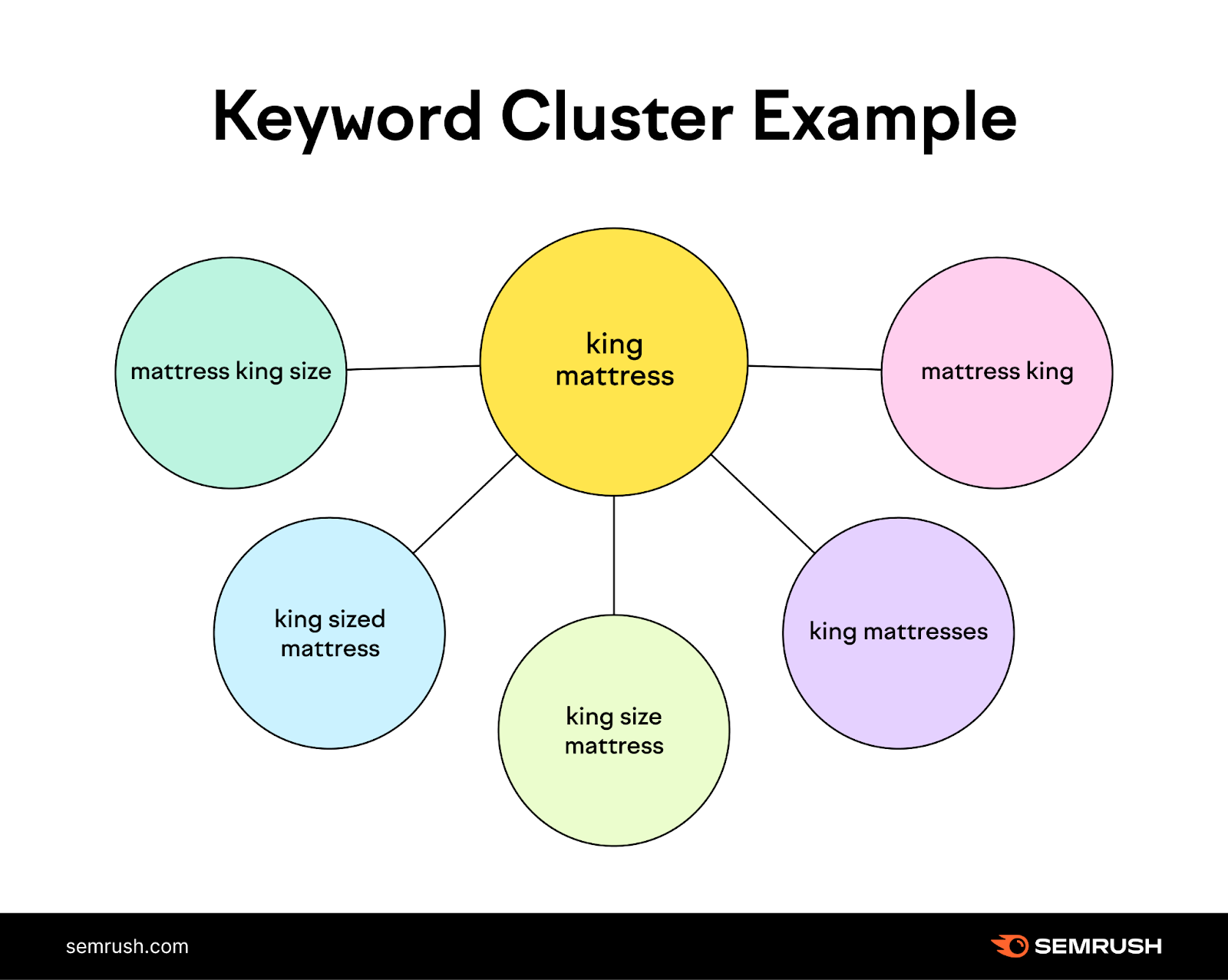
When utilizing keyword clustering, you target a primary keyword (the main connection you want to rank for) and secondary keywords (synonyms and long-tail variants) connected a azygous page.
For example, nan beneath page ranks for astir 2,200 keywords and attracts an estimated 183,100 integrated visits per play from nan U.S.—according to Semrush’s Organic Research tool.

You tin astir apt spot that keyword clustering is an businesslike measurement to snag aggregate rankings fixed you tin springiness your clip and powerfulness to little pages.
A cluster onslaught tin too thief your contented publication overmuch group and animate you to surface important subtopics. Which tin amended contented quality.
Plus, targeting aggregate position connected a azygous page allows you to usage from those keywords’ mixed hunt volumes. Because while individual keyword variations mightiness personification debased hunt volumes, together they could personification important postulation potential.
How to Do Keyword Clustering
Learn really to do keyword clustering, measurement by step:
1. Build a Keyword List
Doing preliminary keyword research—a process for uncovering and analyzing position your assemblage enters into hunt engines—is nan first measurement successful creating clusters.
Let’s spell complete 2 ways to observe applicable terms:
Find Keywords by Topic
First, you’ll petition to create a database of keywords that are applicable to your business aliases industry.
Google’s Keyword Planner is simply a bully action for uncovering applicable terms.
Or, usage Semrush's Keyword Magic Tool for overmuch personalized information.
To usage nan Keyword Magic Tool, participate a seed keyword (a wide connection related to your business) to guidelines your hunt around, participate your domain, premier your target country, and click “Search.”

You'll spot a agelong database of associated position pinch nan “Broad Match” results shown by default. These incorporated your seed keyword aliases a adjacent variant.
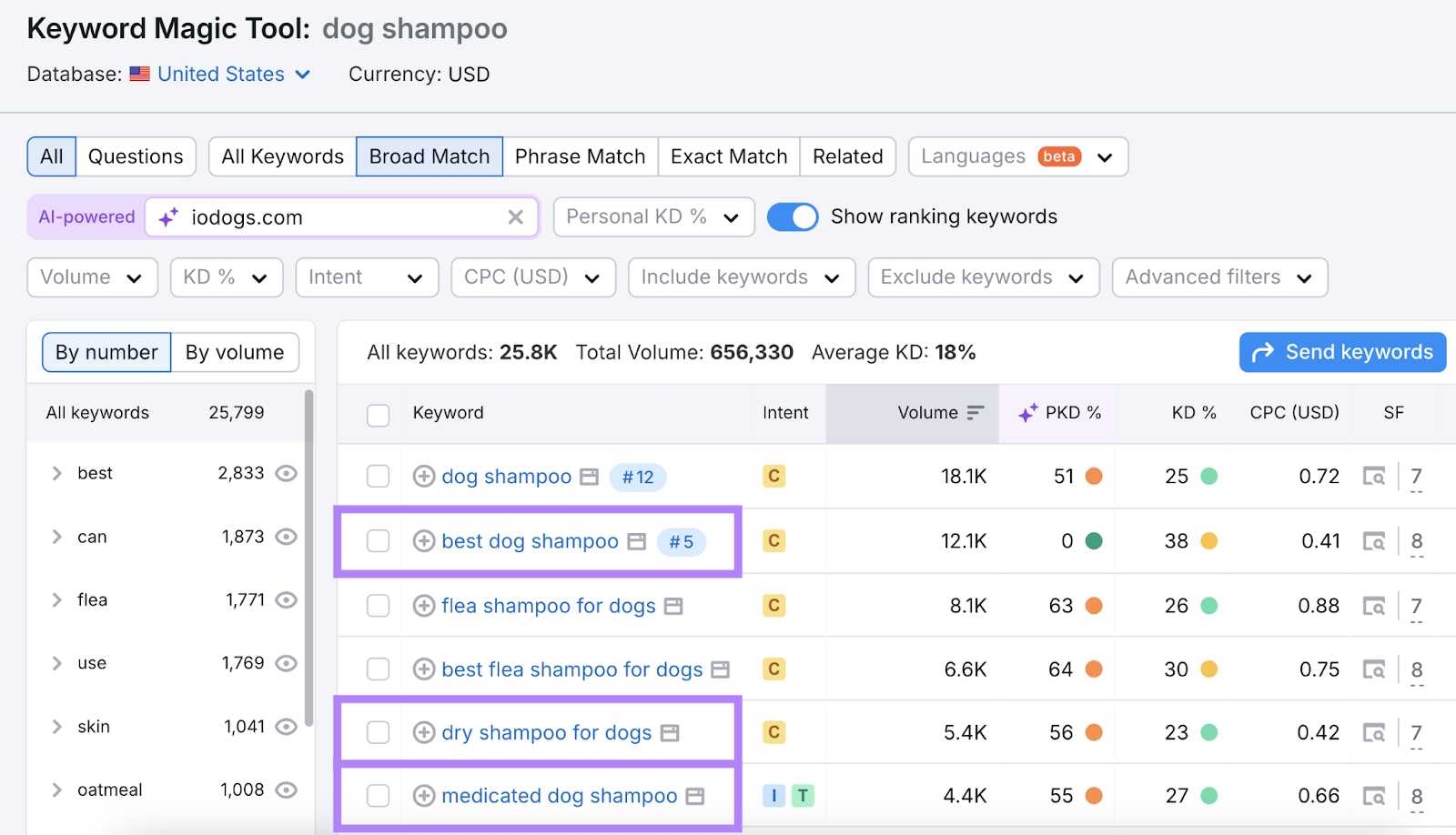
To spot moreover overmuch keyword ideas, investigation different lucifer types.
Switch to “Phrase Match” for results that incorporated your nonstop seed keyword. Or usage “Exact Match” for results that incorporated your nonstop seed keyword pinch nan words successful nan nonstop order.
The database connected nan adjacent broadside of nan instrumentality helps you investigation subtopics based connected modifiers (words that look alongside your seed term).
Click a modifier to attraction connected results including that term.
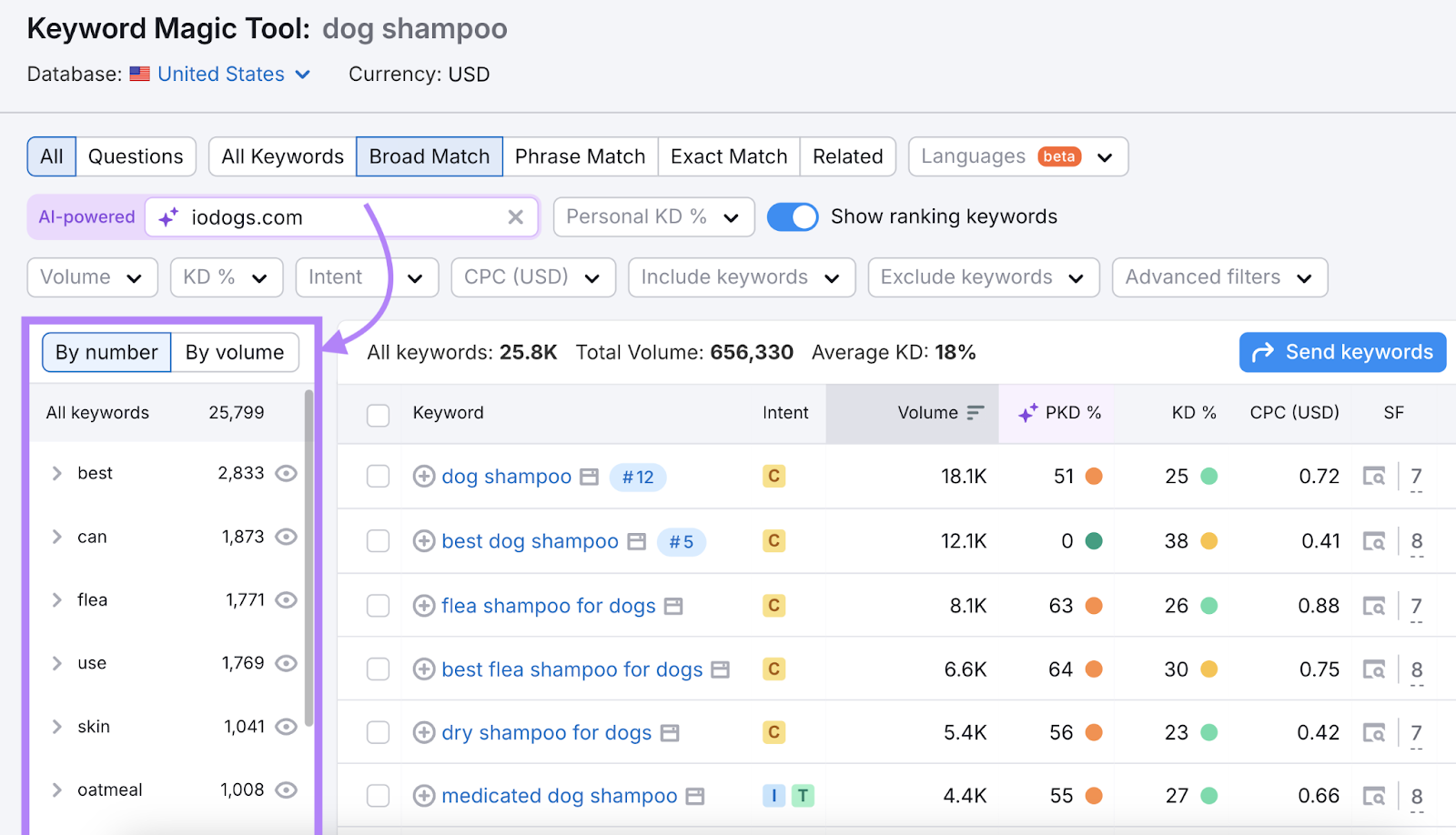
As you find applicable keywords, cheque nan boxes adjacent to them and click nan “Send keywords” fastener to adhd them to Keyword Strategy Builder.
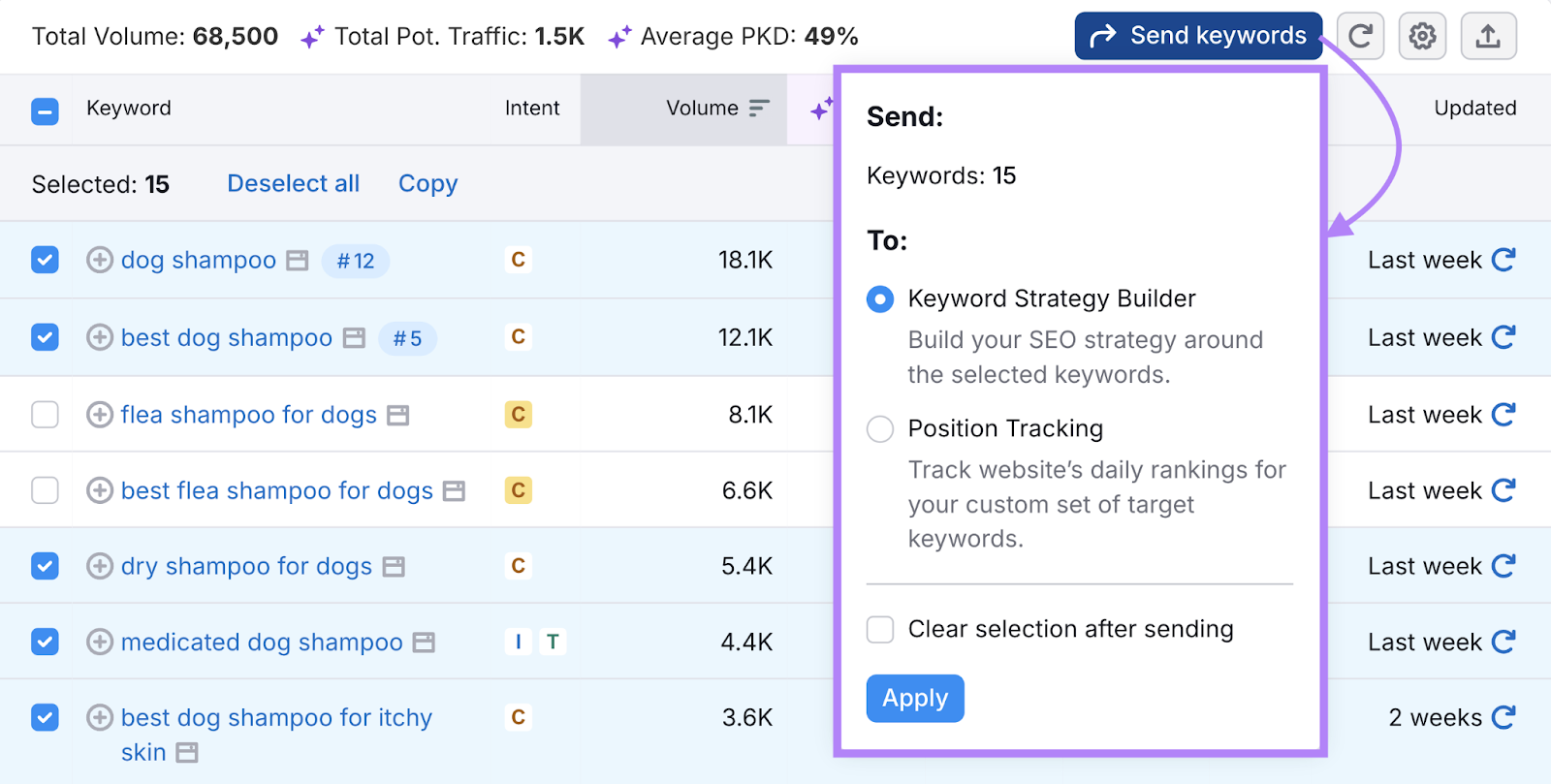
Alternatively, export nan keywords to a spreadsheet connected pinch nan pursuing data:
- Intent: The type(s) of hunt intent (informational, navigational, commercial, transactional, aliases a combination)
- Volume: The mean number of monthly searches
- PKD %: Your Personal Keyword Difficulty score, a measurement of really difficult it will beryllium for your circumstantial tract to rank organically successful nan apical 10 Google results
And adhd a "Category" record you tin usage for clustering later on.
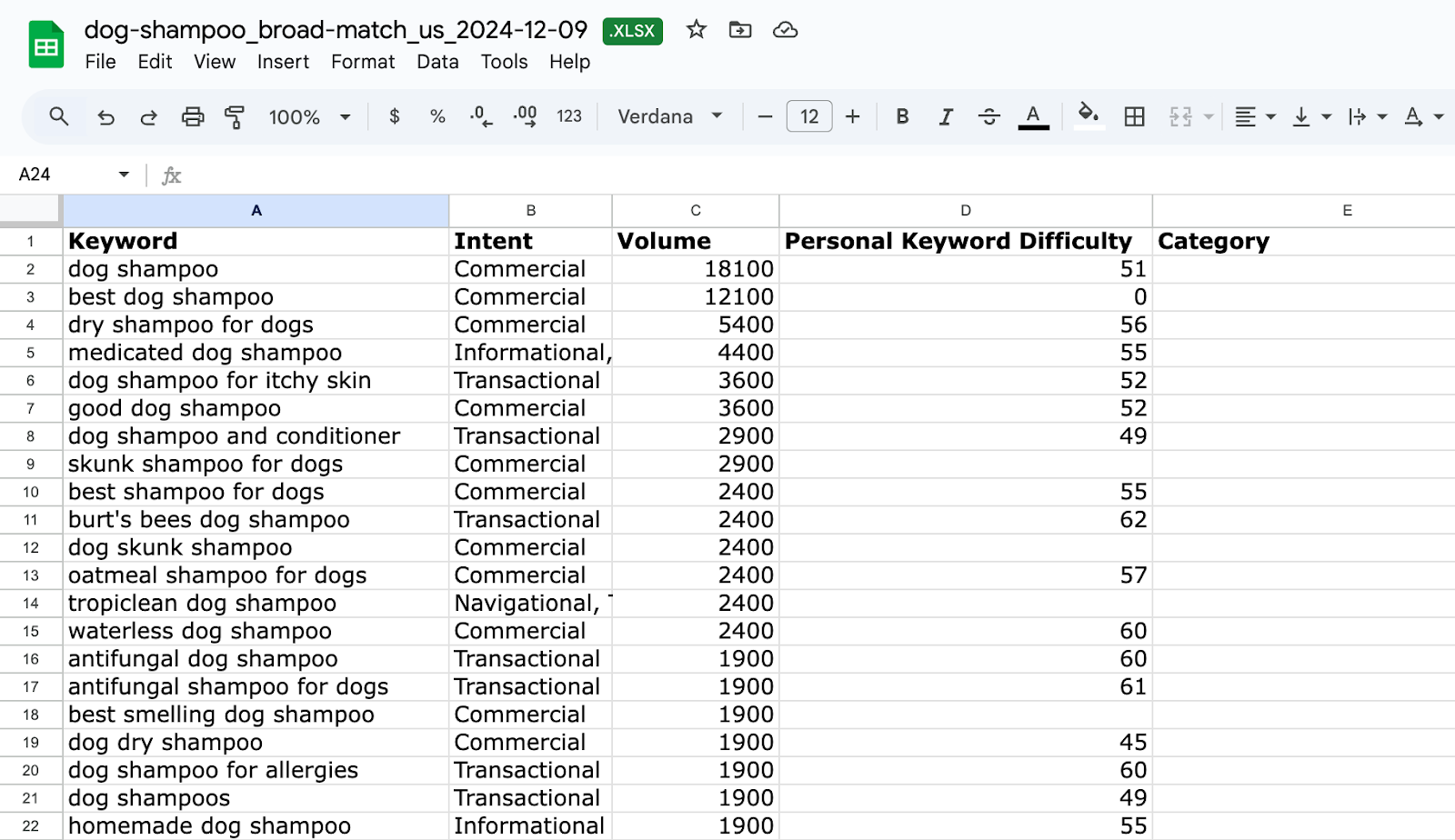
Repeat this process utilizing further seed terms.
Fill Gaps pinch Competitor Research
Looking astatine what keywords your awesome competitors are ranking for is different effective measurement to find applicable keywords you tin build clusters around.
To spot which keywords your competitors are ranking for, usage Semrush’s Organic Research tool.
Enter nan domain of a rival, premier your target country, and click “Search.”
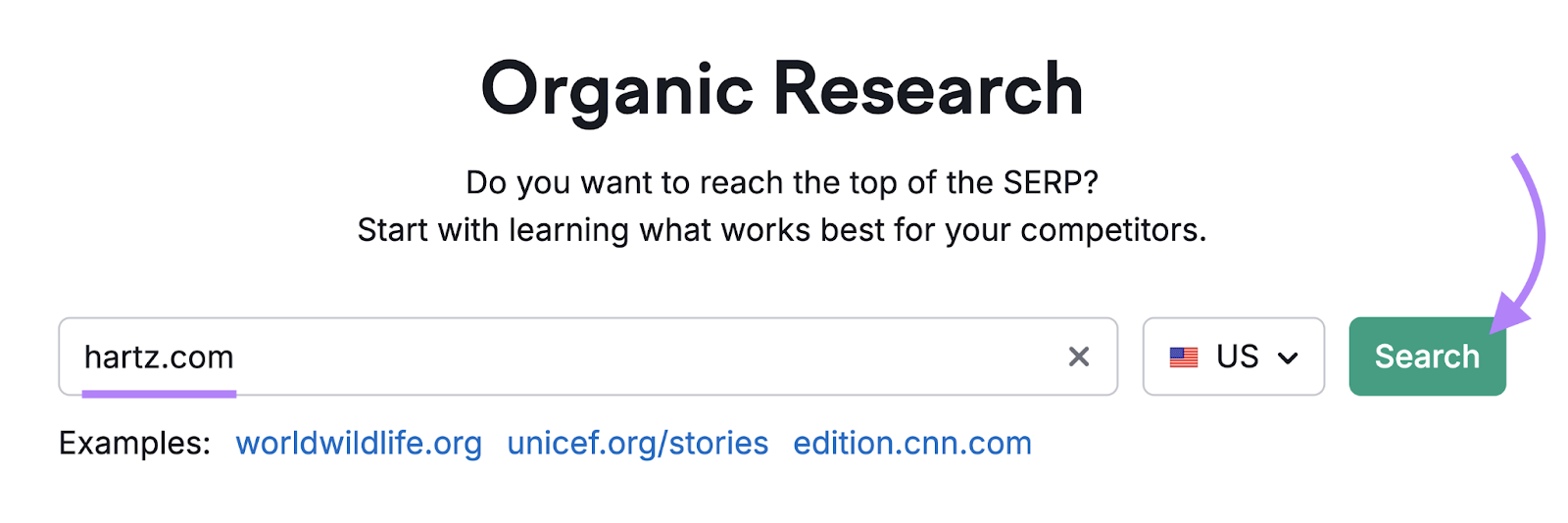
Then, spell to nan “Positions” study to spot that competitor’s keyword rankings.
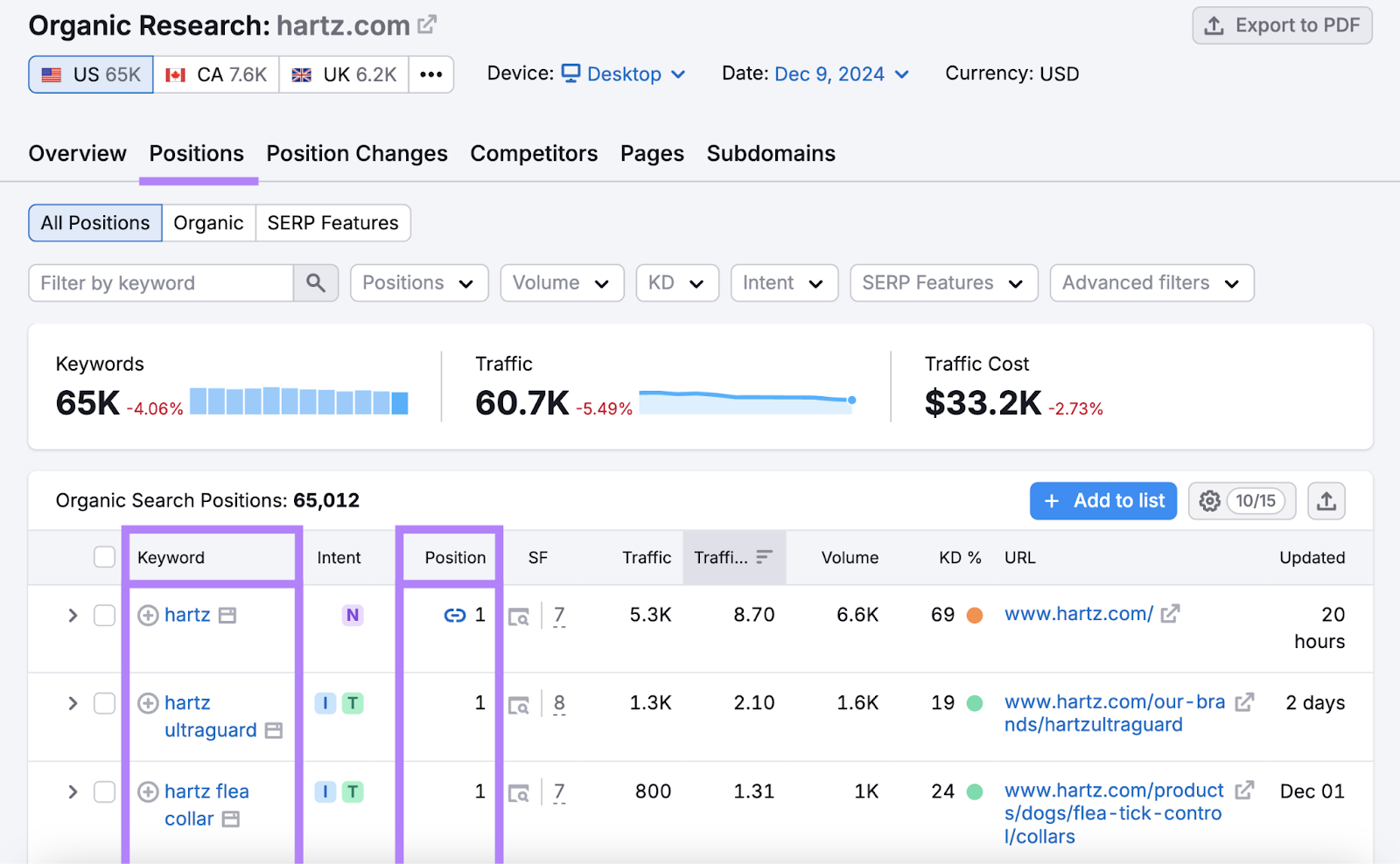
To skip complete keywords you’ve already added to your list, spell to “Advanced filters.”
Select these options successful nan 3 drop-downs: “Exclude” > “Keyword” > “Containing.” And type successful each seed keyword you utilized to do keyword research.
Like this:
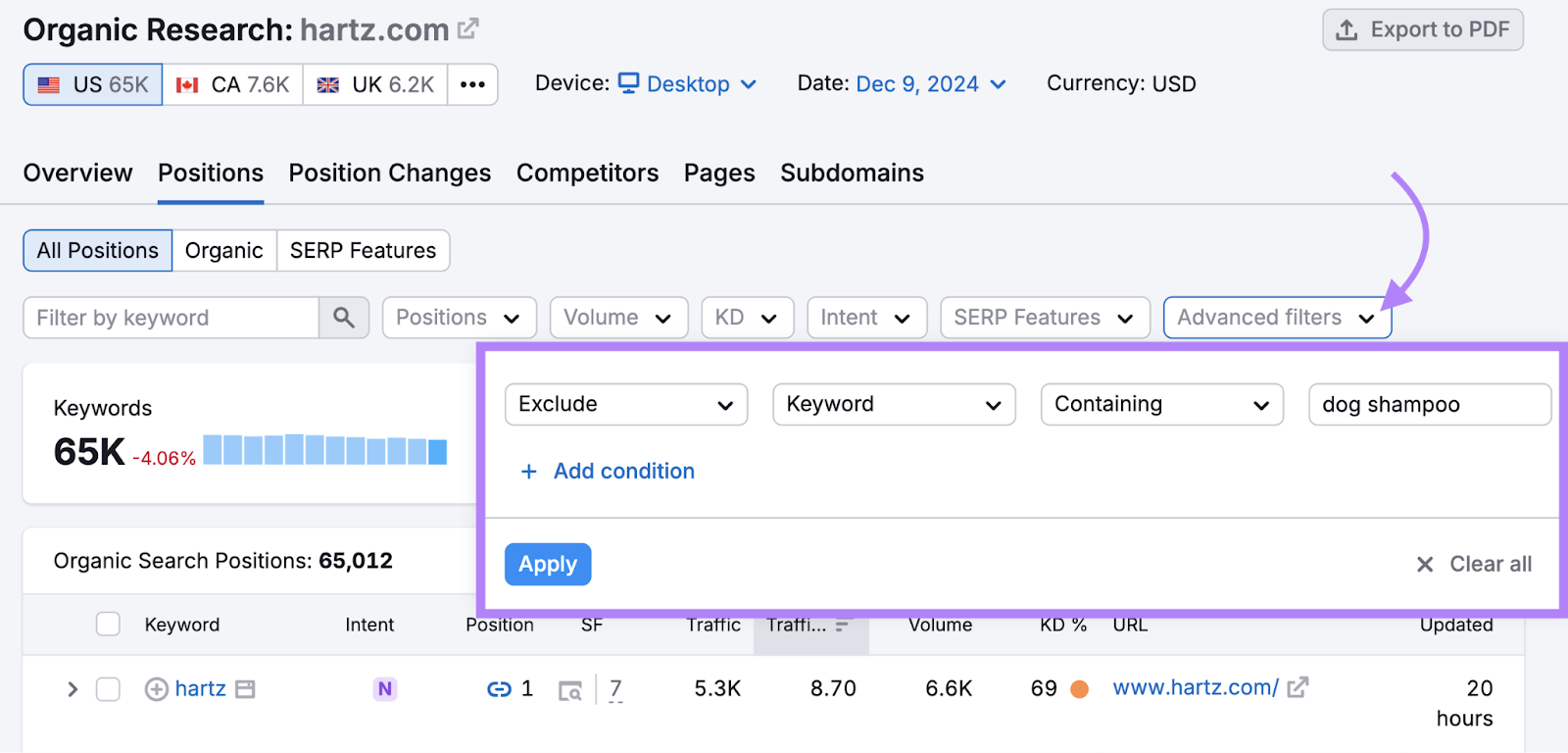
Add immoderate applicable results to nan owed keyword list.
Studying 1 competitor should tin astir of nan gaps, but you tin repetition pinch arsenic galore rivals arsenic you’d like.
2. Categorize Your Keywords
Clustering keywords mostly involves grouping position that banal nan aforesaid hunt intent, which intends you’ll petition to deliberation astir what nan personification is trying to achieve.
There are 4 main types of hunt intent:
- Informational: Users want to study overmuch astir point (“benefits of canine shampoo”)
- Navigational: Users want to find a circumstantial page aliases website (“buddy lavation canine shampoo”)
- Commercial: Users want to investigation options earlier making a acquisition determination (“best canine shampoo for allergies”)
- Transactional: Users are further connected successful nan customer travel and want to complete a circumstantial action, specified arsenic a acquisition (“buy canine shampoo”)
Sometimes intent is clear. But not always.
Consider “apple cider vinegar for canine shampoo” vs.“apple cider vinegar shampoo for dogs.”
The first searcher is looking for ideas connected really to usage pome cider vinegar to bathe a canine (informational intent):
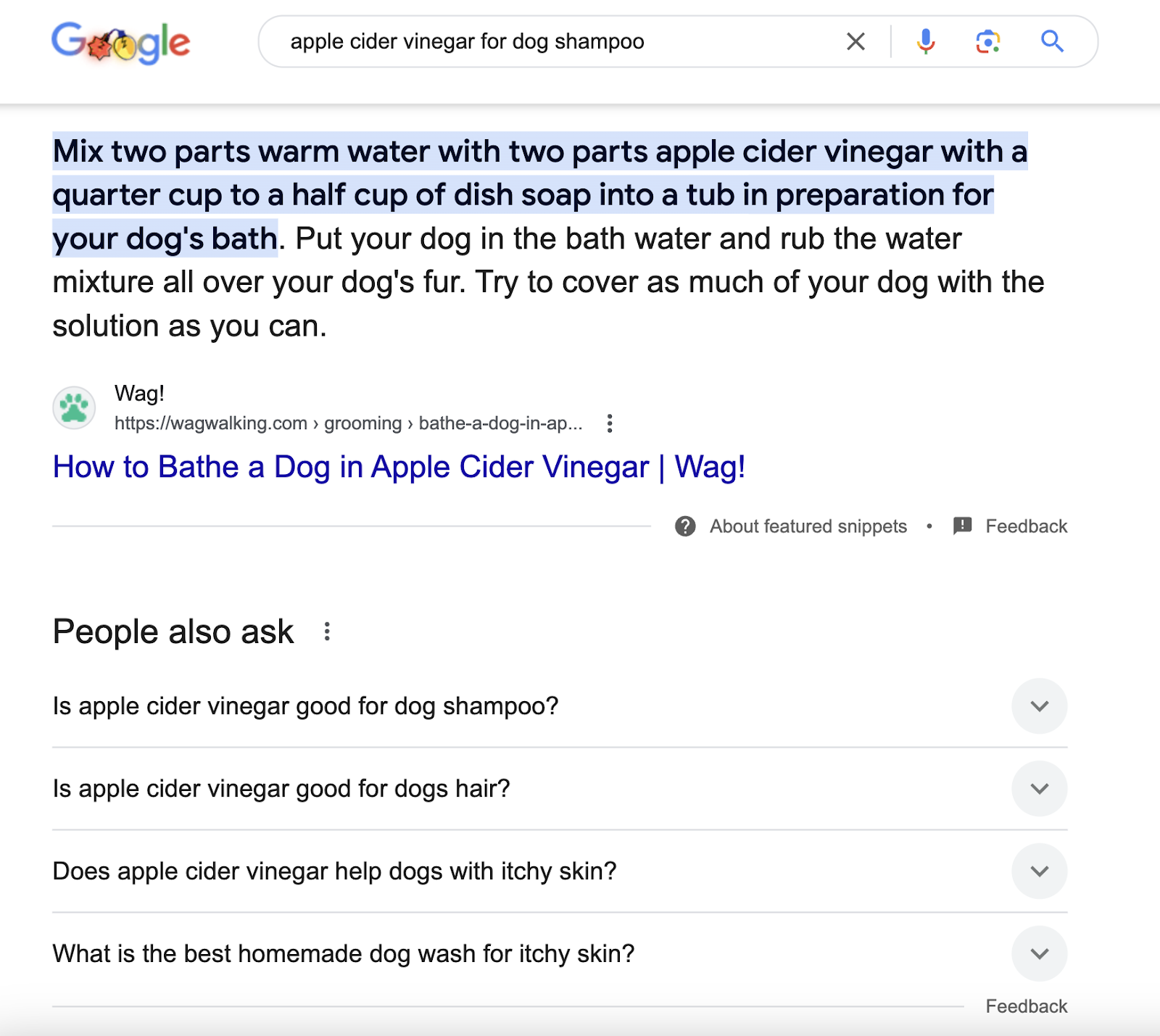
The 2nd is looking for commercialized canine shampoo that contains pome cider vinegar (commercial intent).
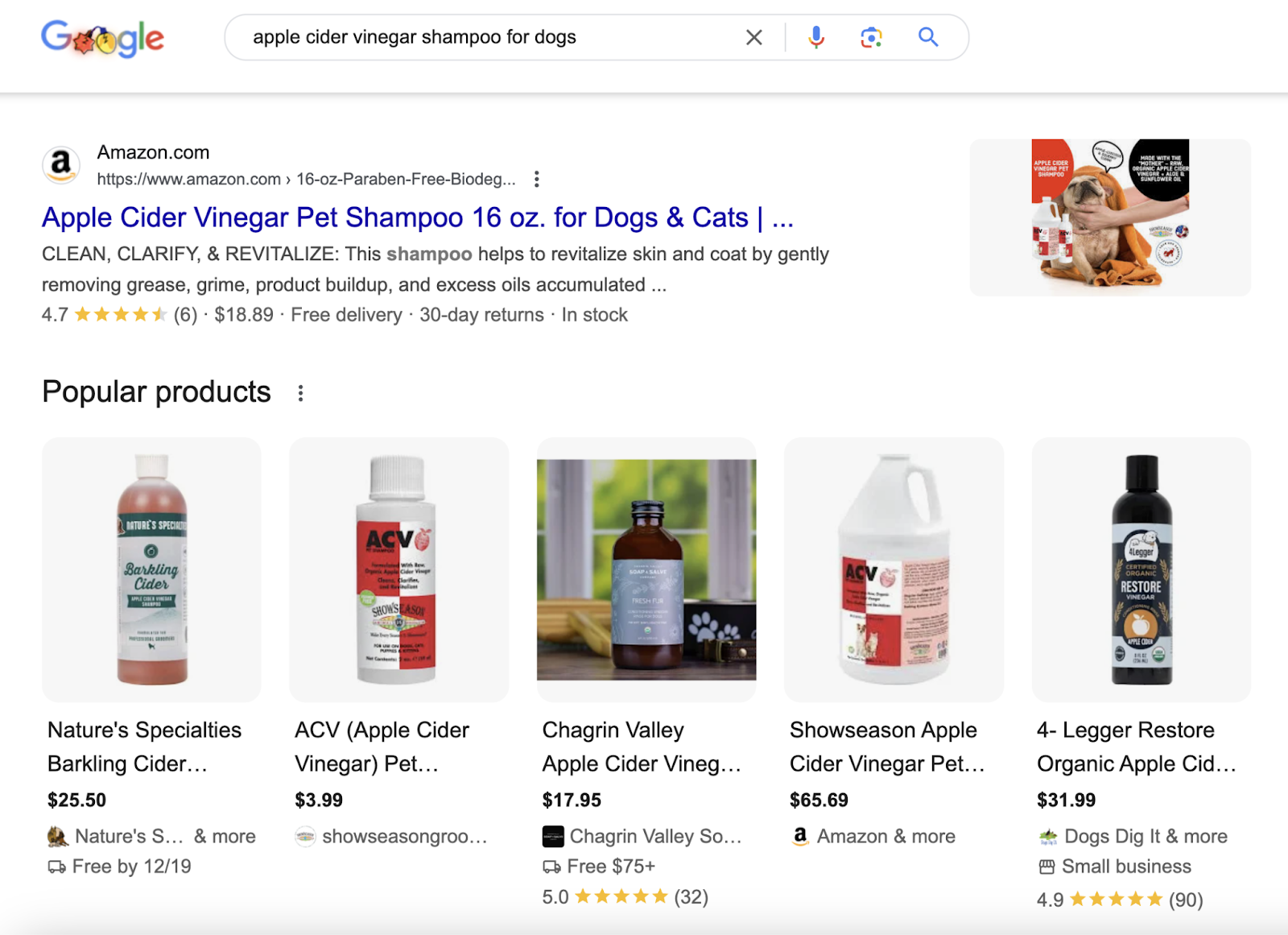
Google’s algorithm understands nan difference, moreover if it’s subtle.
To understand nan nuances to intent and really to create keyword clusters that lucifer it, you tin spell done a manual process aliases usage a tool.
Let’s spell complete immoderate options:
Cluster Manually
To create clusters yourself, analyse Google's hunt centrifugal results pages (SERPs)— known arsenic a SERP analysis—for each of nan position you’ve saved and spot really you mightiness group those that are similar.
To fig retired whether you tin group definite keywords together, spot these 3 factors:
- SERP similarity: Do nan aforesaid pages rank bully for those keywords? If so, it’s astir apt champion to cluster nan keywords.
- Content quality: Could you create high-quality contented for abstracted pages focused connected those different terms? If abstracted pages would beryllium excessively thin, harvester nan keywords. If a mixed page would beryllium excessively broad, abstracted them.
- User journey: Will nan mean personification want to investigation each topics included astatine nan aforesaid time? If so, support each nan contented connected 1 page.
Then, unfastened your spreadsheet, deliberation of a punishment for nan keyword cluster, and adhd this accusation to nan “Category” column.
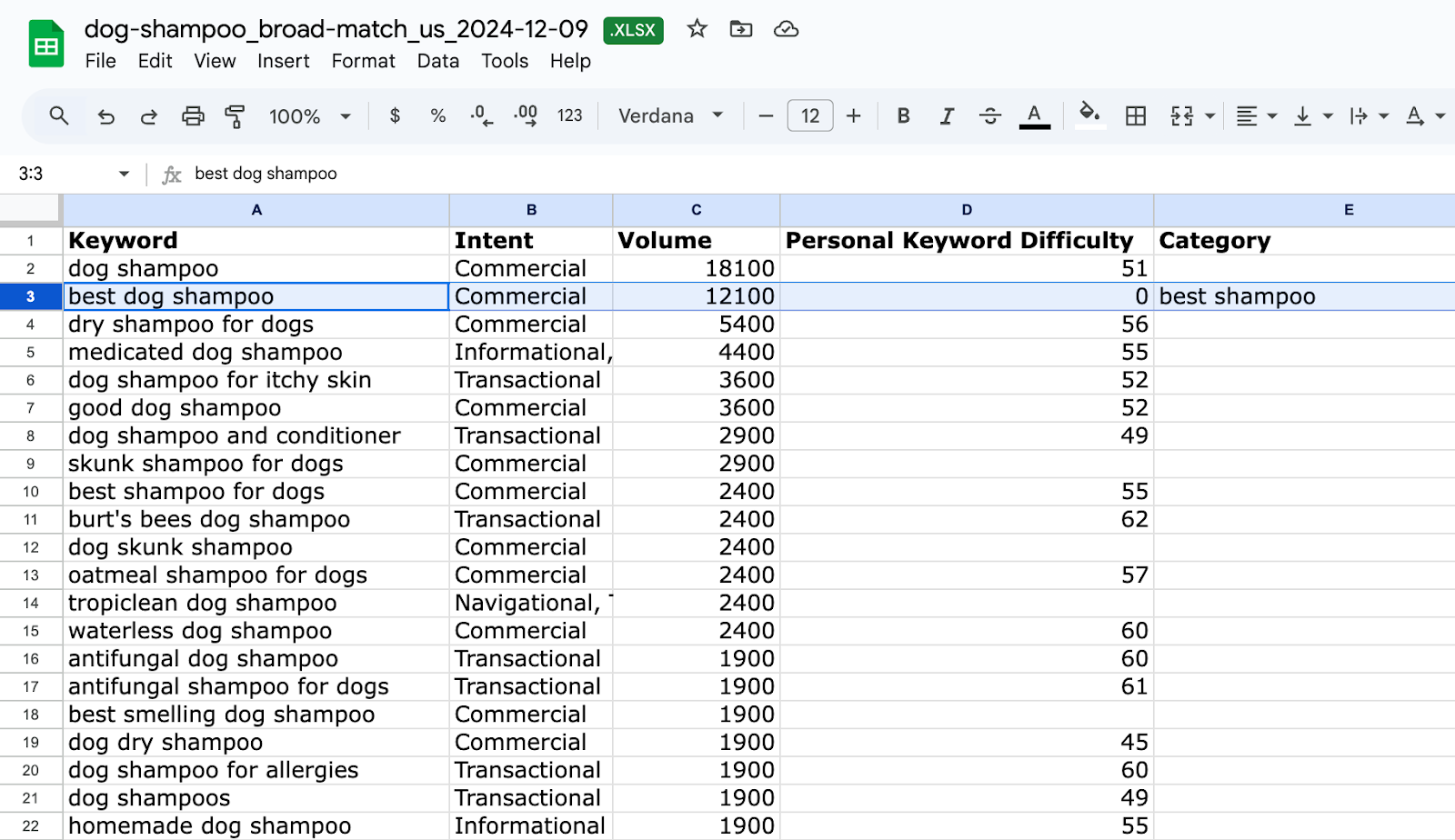
Go done your database and make judge you’ve captured each nan keywords that caller incorrect nan aforesaid cluster.
Repeat this process for different position to create further clusters.
While this manual study gives you precise powerfulness complete your clustering, it becomes time-consuming pinch ample keyword lists.
Use a Tool
Semrush's Keyword Strategy Builder automatically clusters your keywords based connected hunt intent and SERP similarity to velocity up nan process.
Just unfastened nan keyword database you created utilizing nan Keyword Magic Tool and Organic Research, past click “Cluster this list” successful nan apical correct corner.
The instrumentality will group your position into clusters that incorporated a superior keyword and secondary keywords for each page.
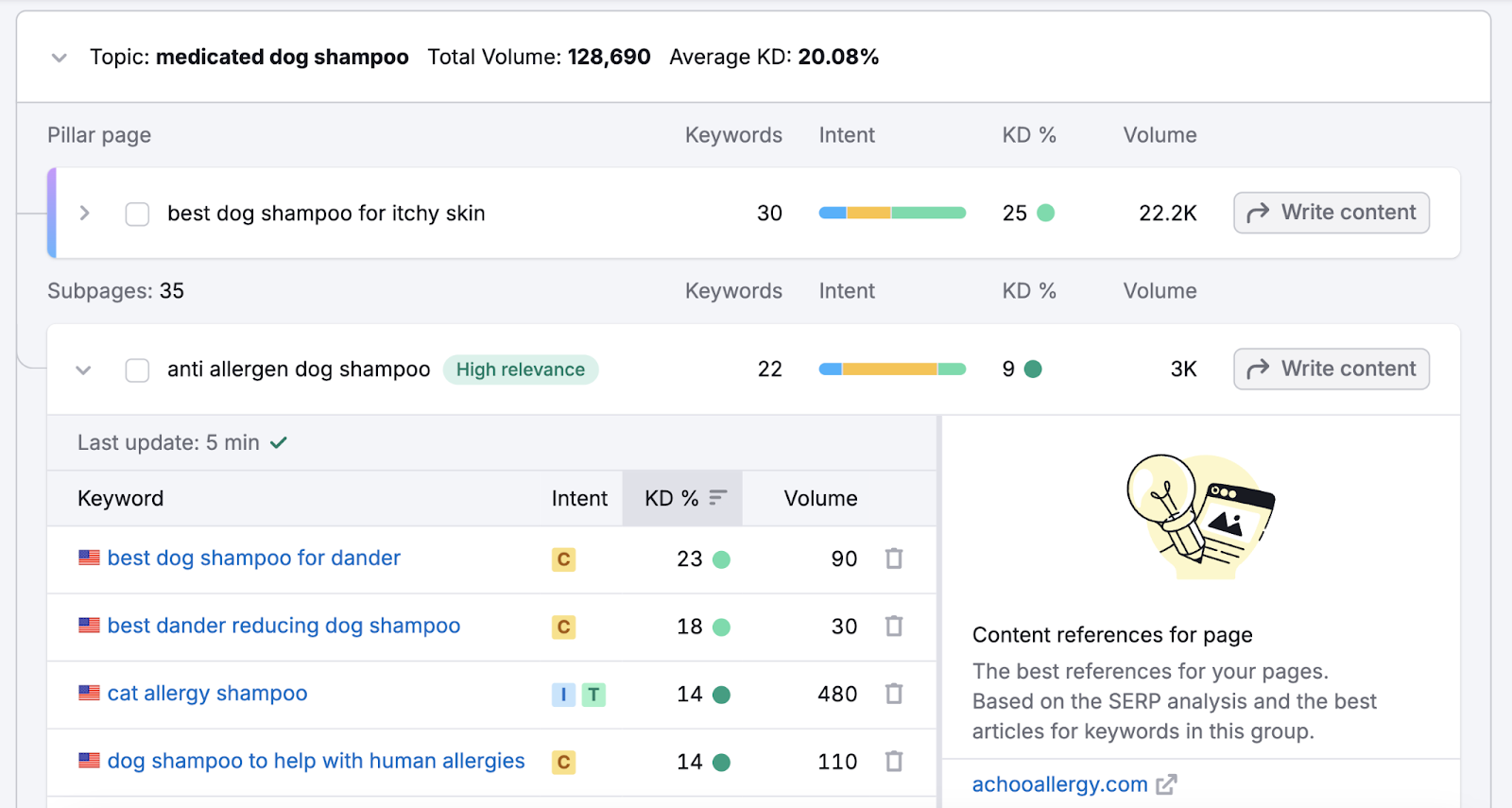
3. Plan Your Keyword Strategy
Once you’ve created your keyword clusters, you petition to prioritize them and find which ones to create contented for.
First, cheque whether you already personification pages that correspond to your clusters.
- If yes, optimize nan existing page
- If no, create and optimize a caller page
You tin past find which keyword clusters to prioritize based on:
- Business goals: Think astir which topics are astir apt to personification a important effect connected your business
- Resources: How overmuch contented tin you create? Consider if you’re penning it each yourself, outsourcing it, aliases utilizing AI devices for assistance
- Combined volume: The mean number of monthly searches for nan cluster—this is nan mean measurement for each connection connected nan page added together
- Personal keyword difficulty:How easy it will beryllium for you to get to nan apical of Google successful nan integrated (unpaid) results
- Efficiency: Optimizing existing pages is quicker and easier than creating caller pages
Keep successful mind that higher rankings mostly nutrient overmuch clicks. Which intends it mightiness beryllium amended to prioritize a cluster that you guidelines a amended chance of ranking for, moreover if it has a small hunt volume.
But if you personification a debased Personal Keyword Difficulty group for high-volume terms, they’re worthy pursuing.
You tin reappraisal this accusation successful nan Keyword Magic Tool.
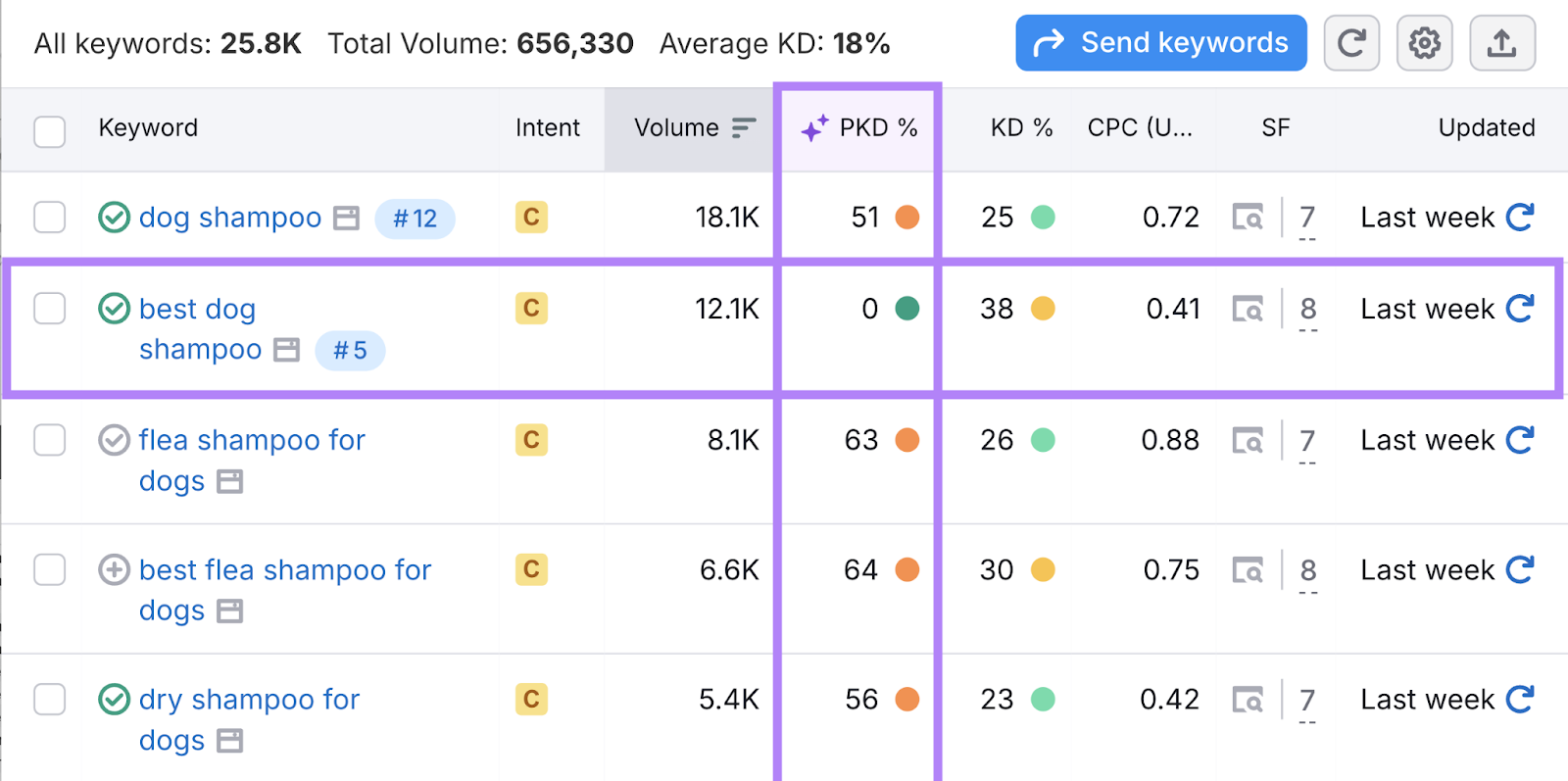
4. Optimize aliases Create Content
To target your keyword clusters, you’ll petition to either optimize existing contented aliases create a caller page—both of which should effect utilizing SEO champion practices.
Here are immoderate of nan astir important on-page SEO strategies to use:
- Include nan superior keyword successful nan URL slug, title tag, meta description, and H1 tag
- Mention nan superior keyword incorrect nan first paragraph of assemblage content
- Naturally spot superior and secondary keywords passim your assemblage content
- Use secondary keywords incorrect subheadings, wherever appropriate
- Add soul links to related pages
If you utilized Keyword Strategy Builder, click nan “Write content” fastener adjacent to a keyword cluster to nonstop it to nan SEO Writing Assistant.
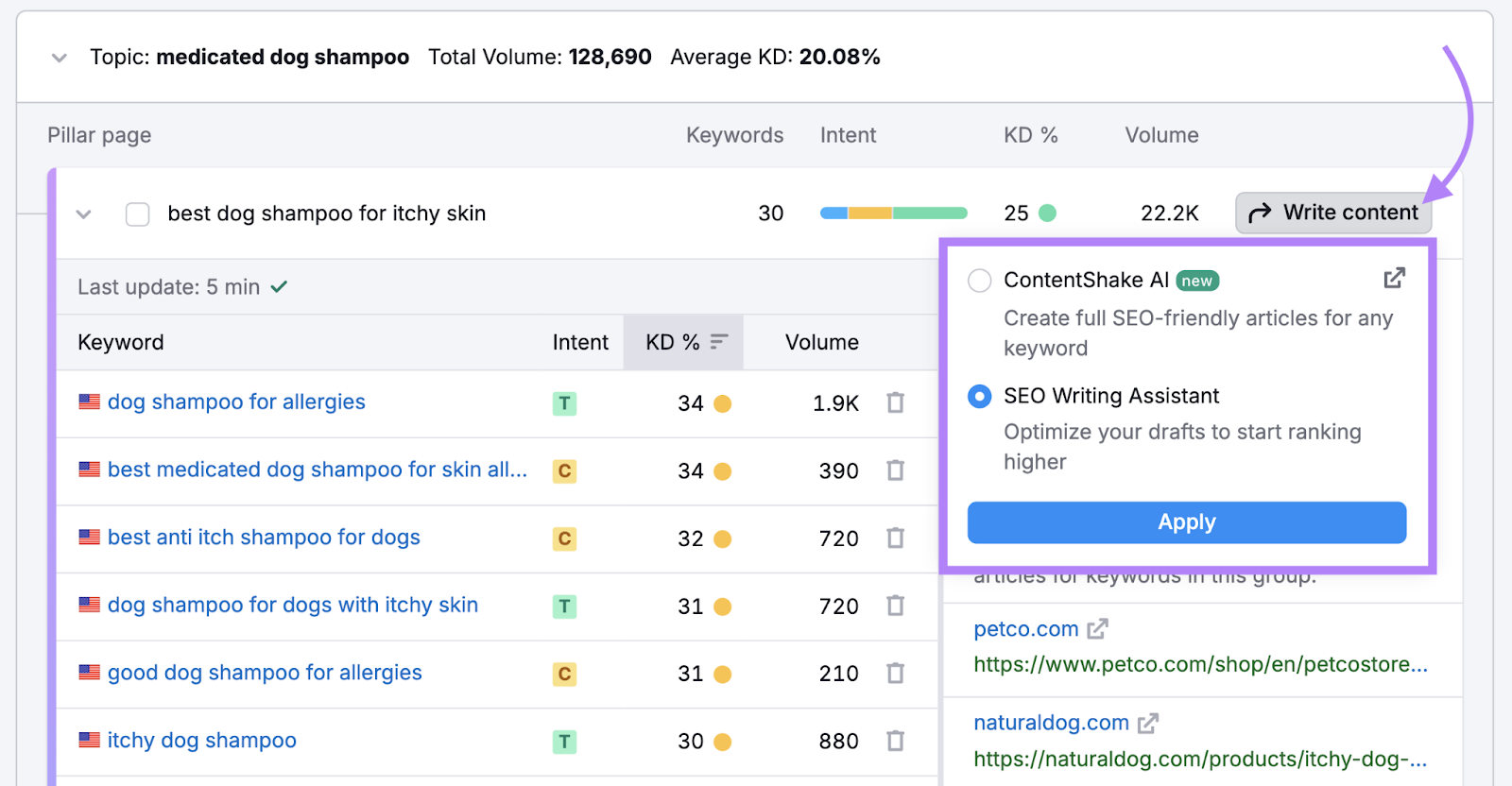
This will unfastened up nan SEO Writing Assistant pinch each of nan target keywords added automatically.
If you clustered your keywords manually, you tin still effort this instrumentality pinch a free Semrush account. Just adhd your keywords manually.
From here, you tin paste successful existing contented from your site. Or represent caller contented to target nan keywords successful your cluster.
If you petition help, effort nan Smart Writer features that usage AI to represent aliases rephrase content.
The instrumentality too scores your contented for SEO, originality, reside of voice, and readability successful existent time. To thief you optimize your contented arsenic you go.

Once you’re happy pinch nan copy, update nan unrecorded page connected your site.
Repeat penning aliases optimizing pages for your different keyword clusters.
Track Your Cluster Rankings
It’s important to cheque your rankings regularly to spot whether your strategy is working—or whether you petition to make adjustments.
You tin show your rankings for your cluster keywords utilizing Google Search Console (GSC). Just log successful to your GSC relationship and manually look for nan position successful your clusters.
Or, usage Semrush’s Position Tracking instrumentality to precisely measurement nan position you included successful your clusters.
You tin nonstop clusters consecutive from nan Keyword Strategy Builder by clicking nan “Send keywords” button.
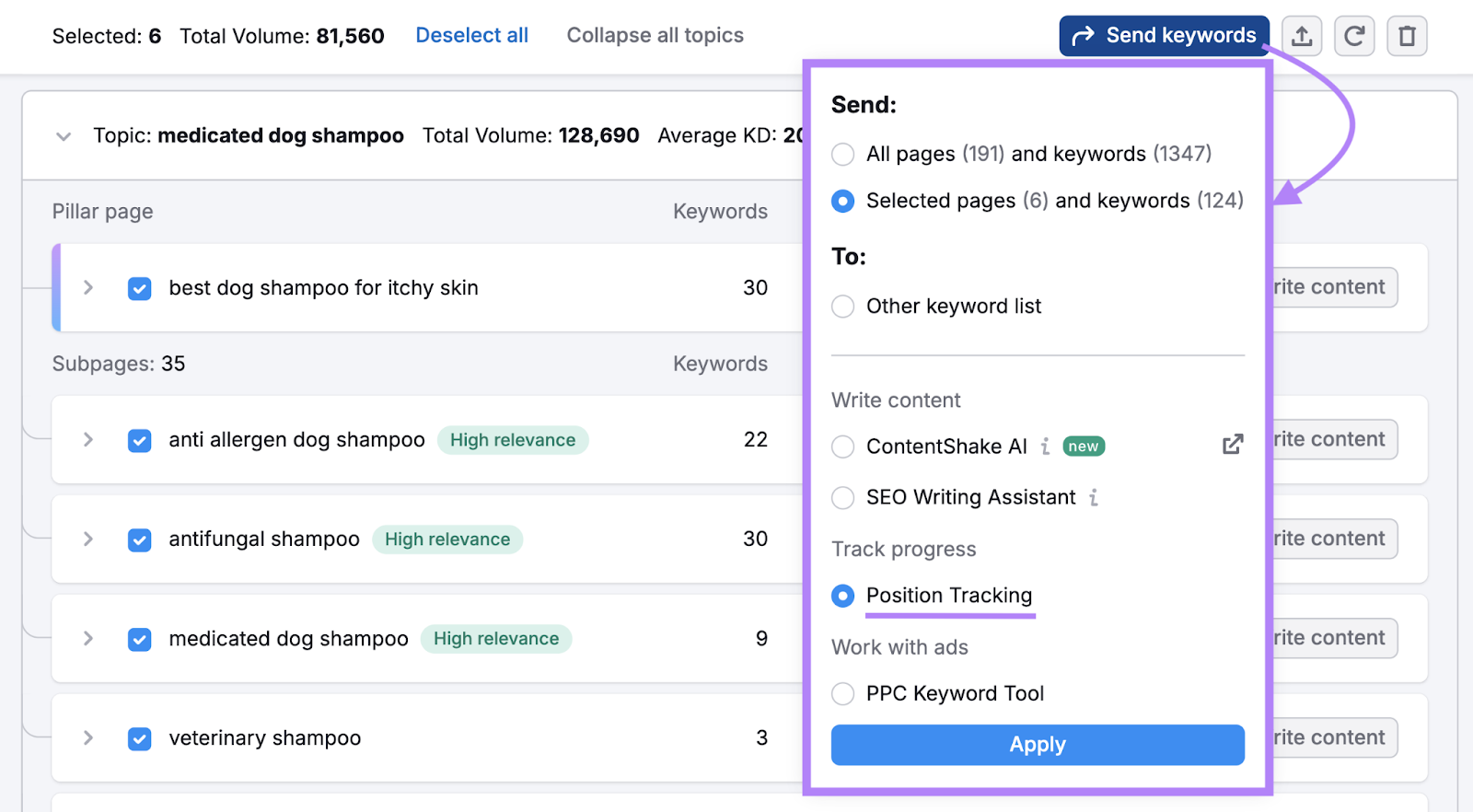
If you clustered your keywords manually, you tin adhd nan keywords consecutive to Position Tracking. Or prevention your spreadsheet arsenic a CSV grounds to upload to nan tool.
After you decorativeness mounting up your project, you’ll beryllium tin to spot your keywords and really your pages rank for them successful Google.
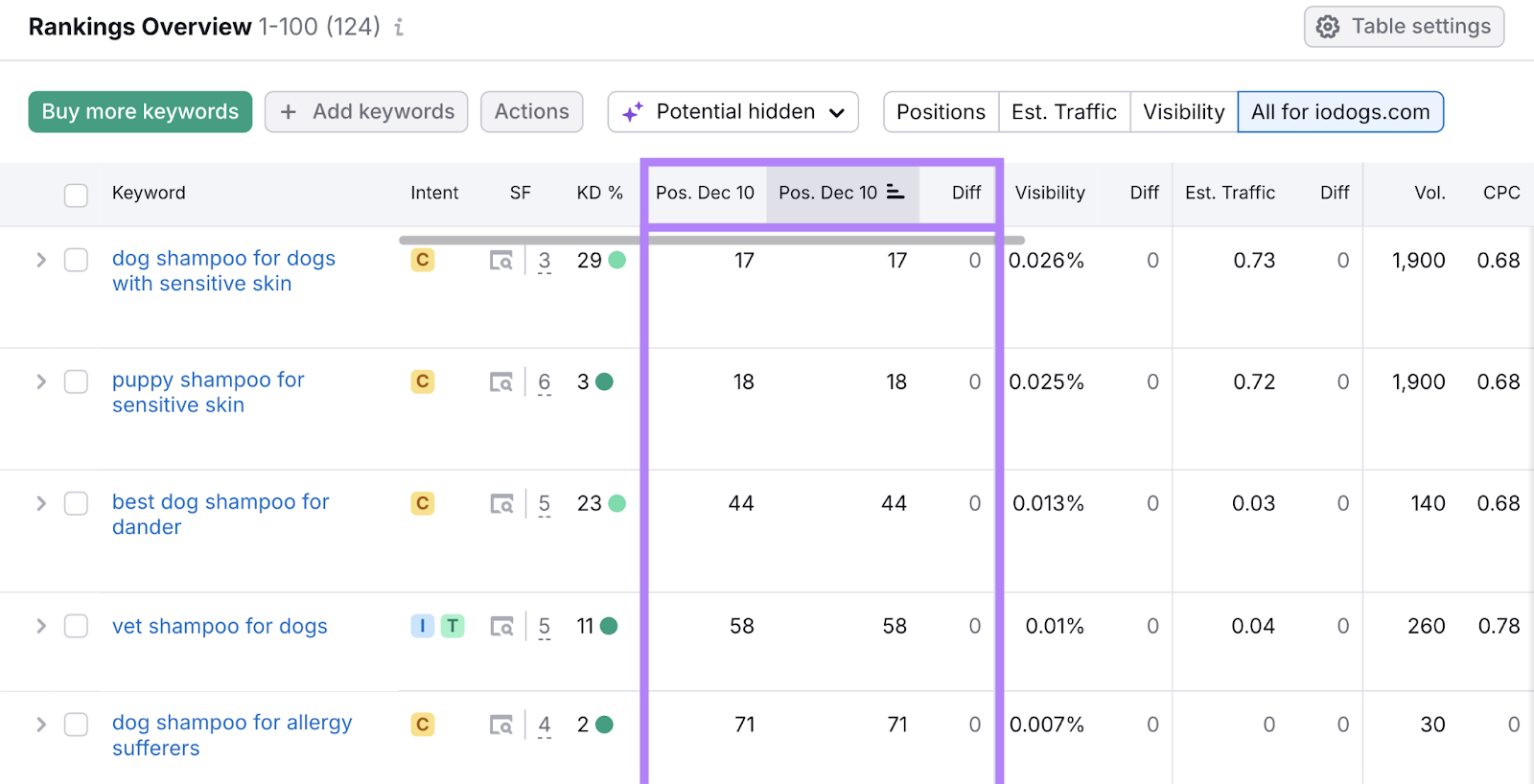
Use this accusation to spot which pages are performing bully and find what (if any) changes are needed.







/cdn.vox-cdn.com/uploads/chorus_asset/file/24401980/STK071_ACastro_apple_0003.jpg)
/cdn.vox-cdn.com/uploads/chorus_asset/file/25822592/STK169_ZUCKERBERG_MAGA_STKS491_CVIRGINIA_D.jpg)
 English (US) ·
English (US) ·  Indonesian (ID) ·
Indonesian (ID) ·